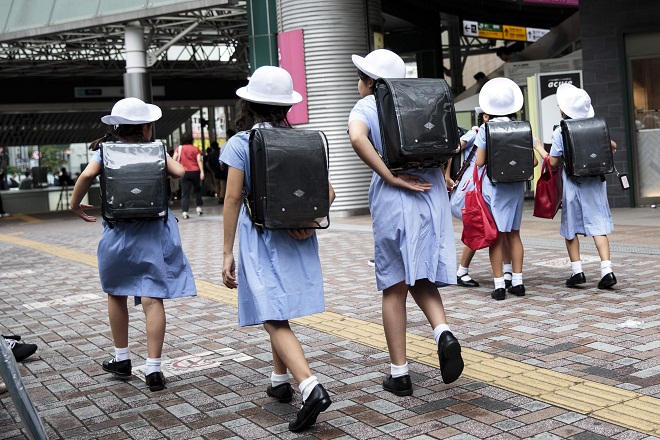Visual Acuity of Japanese Schoolchildren Worst on Record
December 21, 2018
Tokyo--The proportions of Japanese elementary and high school students with visual acuity of less than 1.0 on the Japanese scale rewrote record highs, a fiscal 2018 health survey by the education ministry showed Friday.
"According to experts, the results reflected the fact that children look at the screens of smartphones and portable game consoles from close range for longer," an official of the ministry said.
The survey was based on health checkups carried out from April to June for children aged between 5 and 17. It covered 25.3 pct of the checkup results, or some 3.42 million children.
Uncorrected vision of less than 1.0 was found for 34.10 pct of elementary school children and for 67.09 pct of high school students, both record highs, a preliminary report of the survey said.
The proportion of junior high school students with weaker-than-standard vision came to 56.04 pct, against the record high of 56.33 in 2017.
Record highs were also set for the proportions of elementary and junior high school students with ear problems, excluding hearing impairments, for elementary and high school students with nasal and paranasal sinus diseases, and for junior high and high school students with atopic dermatitis.
A rise in the number of children suffering from allergies may be one of the reasons behind the record highs, the official said, citing expert opinion.
Meanwhile, the proportion of children with decayed teeth continued to decline overall, with the shares of junior high and high school students having dental cavities both at record lows.
The survey also found that the proportions of children in Fukushima Prefecture weighing at least 20 pct more than standard were not highest in any age group among Japan's 47 prefectures. The proportions rose suddenly in the years immediately after outdoor activities were restricted due to fears about exposure to radiation following the 2011 nuclear accident at Tokyo Electric Power Company Holdings Inc.'s <9501> Fukushima No. 1 power plant.
In fiscal 2017, the shares of overweight children in the northeastern Japan prefecture were first in five age groups, after drops in fiscal 2015 and 2016.
The official said the fiscal 2018 results partly reflected programs to improve the physical strength of Fukushima children. The official also suggested that the ministry plans to monitor outcomes on a long-term basis. Jiji Press
Latest Videos
- THE UNTOLD STORY EXPERT INSIGHTS INTO THE UKRAINE
- NEGOTIATING A NEW ORDER US RUSSIA TALKS ON UKRAIN
- Ukraine: A Pawn in the Geopolitical Game? Will Trump Intervene?
- US VP VANCE CRITICIZES EUROPEAN DEMOCRACIES AT MUNICH SECURITY CONFERENCE
- UNCOVERING THE WEB OF DECEIT: CIA INFILTRATION OF THE MEDIA
- SHIFTING SANDS: TULSI GABBARD’S CONFIRMATION AND THE EVOLVING GLOBAL LANDSCAPE
- FAUCI SCANDAL: A THREAT TO GLOBAL HEALTH AND DEMOCRACY






